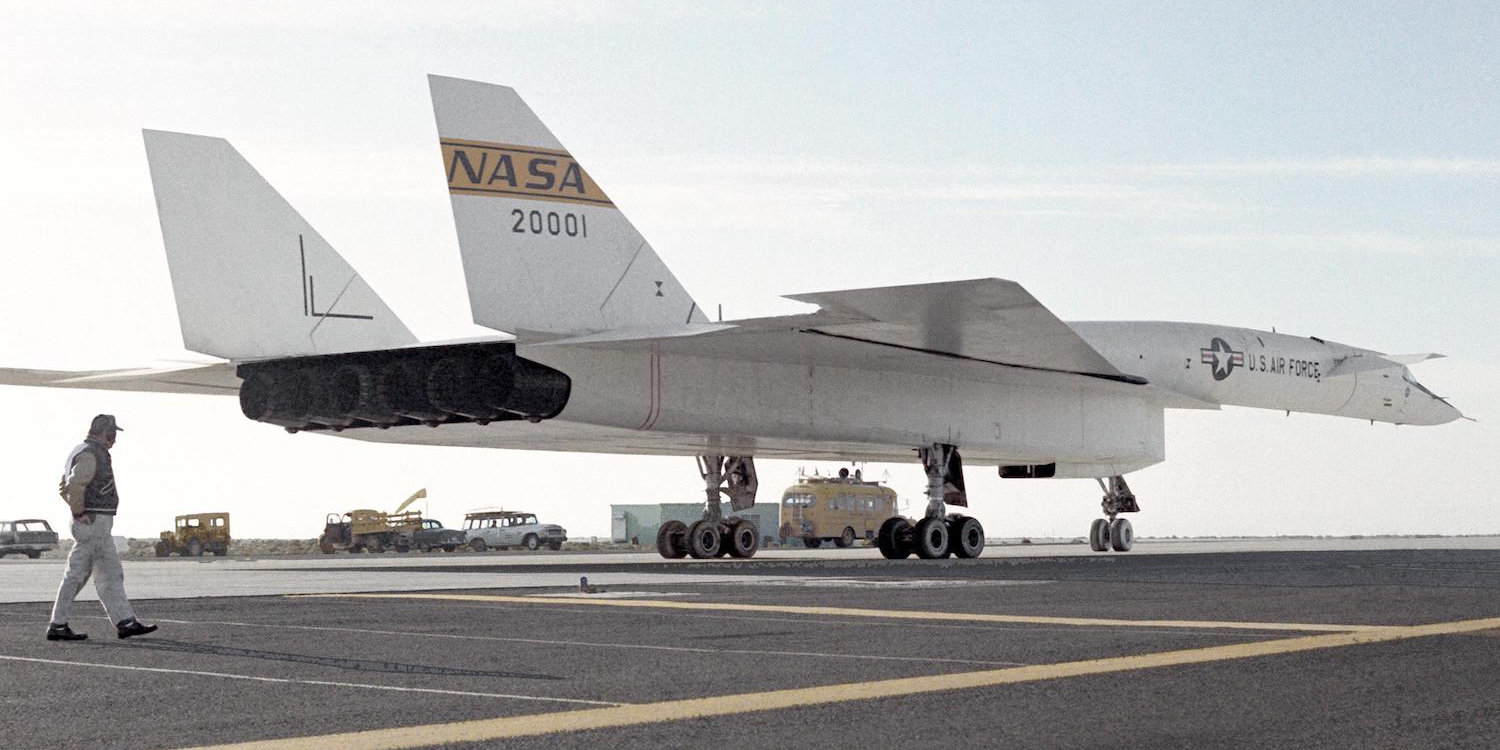It was the “largest and fastest bomber” that the US ever built, according to The National Interest.
The XB-70 Valkyrie could cruise at Mach 3, riding its own shock wave to do so, and could hit altitudes of 70,000 feet.
But the XB-70 Valkyrie never went into full-scale production, and now there’s only one left in the world, sitting on display at The National Museum of the US Air Force in Dayton, Ohio.
The XB-70 was developed in the 1950s to outrun enemy interceptors and air defenses, but ended up being doomed by the birth of surface-to-air missiles.
In 1961, President John F. Kennedy scratched the XB-70 as an actual bomber program - but the aircraft continued to fly for research purposes until February 1969.
Check it out below:
The XB-70 Valkyrie made its maiden flight in September 1964.

The first XB-70 Valkyrie built, the XB-70A, had handling at speeds greater than Mach 2.5, and only got above Mach 3 once. So a second one was built, the XB-70B, with the wings adjusted just 5 degrees, which helped handling. The XB-70B flew for the first time in July 1965.
Source: NASA
It was 185 feet long.

Source: Boeing
105 feet wide.

Source: Boeing
And 30 feet tall.

Source: Boeing
It had six General Electric J-93 turbojets, each providing the XB-70 with 30,000 pounds of thrust.

Source: Boeing
It could hit speeds of 2,000 mph and altitudes of more than 70,000 feet.

Source: Boeing
Here's a shot of what the XB-70 cockpit looks like at the The National Museum of the US Air Force.

And here's a shot of the cockpit from the electronic equipment compartment.

On June 8, 1966, while conducting high-speed flight research, the XB-70 collided with NASA's F-104N chase plane, killing the F-104 pilot and the XB-70 co-pilot. The other XB-70 pilot was able to eject and survived, albeit with serious injuries.

After the destruction of the XB-70B, only the first XB-70A remained.
Source: NASA
The XB-70 continued flying for research purposes until February 1969, and much of the research done contributed to the development of the B-1 bomber.

Source: Popular Mechanics
In October 2015, the only remaining XB-70 was moved into a new building at the National Museum of the US Air Force.

Where it remains to this day.

See more about the XB-70 in the short video below:

